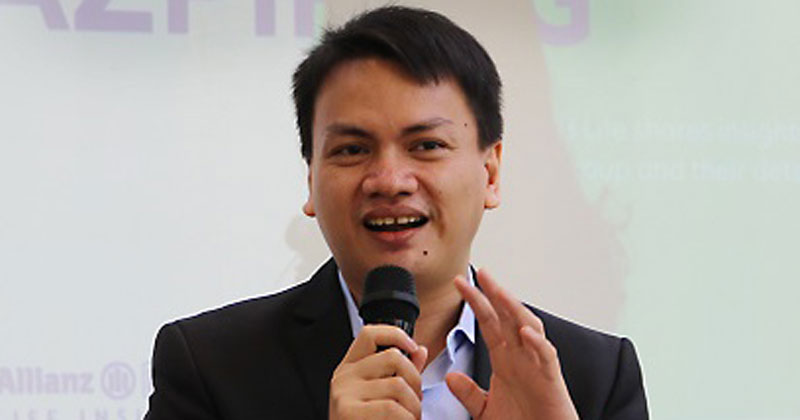The Philippine economy will remain one of the most dynamic in the region amid a marked decline in household wealth across Asia, according to the recent Allianz Global Wealth Report.
Allianz released the Allianz Global Wealth Report, which assessed the global wealth and debt situation. The report showed a simultaneous decline in financial assets held by private households in 2018, the first time since the financial crisis more than a decade ago.
Gross financial assets declined by 0.4% in emerging-market economies, but the drop was more pronounced in Asia (excluding Japan) at 0.9%, the report showed. This was triggered by a sharp 14% fall in securities such as equity and investment funds, although bank deposits and insurance and pensions grew healthily by 8.7% and 8.2%, respectively, in Asia.
Savers worldwide found themselves in a bind, due to the escalating trade conflict between the United States and China, Brexit and increasing geopolitical tensions, the tightening of monetary conditions and the (announced) normalization of monetary policy, the Allianz Global Wealth Report said.
“Despite these external factors, the Philippine economy grew by a healthy 6.2% in 2018. A slowdown is expected in 2019 but fundamentals remain very strong. Country’s expected GDP growth will be above that of many developed and developing economies.” said Efren Caringal, Chief Financial Officer of Allianz Philippines.
Wealth and debt indicators also remained positive, even with domestic inflation rising markedly to 5.2% in June 2018 from 2.9% in 2017. Caringal added that headline inflation has since cooled down, falling to a near 3-year low of 1.7% last month.
Philippine deposit and loan growth moderated in 2018: Consumer loans increased by 11.5%, against 17.2% in 2017, and deposits advanced by 8.9% (versus 11.6% in 2017).
“This resilience is remarkable considering the hostile global economic context, and bodes well for short- to medium-term growth,” Caringal said.
The 2018 Allianz Global Wealth Report found that global gross financial assets of private households fell by 0.1% and remained more or less flat at EUR 172.5 trillion. Global equity prices fell by around 12% in 2018, which had a direct impact on asset growth.
“The increasing uncertainty takes its toll,” said Michael Heise, chief economist of Allianz Group. “The dismantling of the rule-based global economic order is poisonous for wealth accumulation. The numbers for asset growth also make it evident: Trade is a no zero-sum game. Either all are on the winning side – as in the past – or all are on the losing side – as happened last year. Aggressive protectionism knows no winners.”
Worldwide household liabilities rose by 5.7% in 2018, a tad below the previous year’s level of 6.0%, but also well above the long-term average annual growth rate of 3.6%. The global debt ratio (liabilities as a percentage of gross domestic product or GDP), however, remained stable at 65.1%, thanks to still-robust economic growth.
The ranking of the richest countries/regions (financial assets per capita) is again topped by the USA, replacing Switzerland, not least thanks to the strong dollar. Singapore climbed to third place in 2018 capturing, for the first time, the crown as the richest country/region in Asia.
Looking at how the list has changed since the turn of the century, the rise of Asia becomes evident: The big winners include Singapore (+13 places) and Taiwan (+10 places) as well as – last year’s setback notwithstanding – China (+6 places) and South Korea (+5 places).
For the first time in over a decade, the global wealth middle class did not grow: At the end of 2018, roughly 1,040 million people belonged to the global wealth middle class – which is more or less the same number of people as one year before. Against the backdrop of shrinking assets in China, this does not come as a big surprise. Because up to now the emergence of the new global middle class was mainly a Chinese affair: Almost half of their members speak Chinese as well as 25% of the wealth upper class.
“There are still plenty of opportunities for global prosperity,” said Arne Holzhausen, Allianz Group Head of Insurance & Wealth Markets and co-author of the report. “If other heavily populated countries such as Brazil, Russia, Indonesia and in particular India would have a level distribution of wealth comparable to China, the global wealth middle class would be boosted by around 350 million people and the global wealth upper class by around 200 million people. And the global distribution of wealth would be a little more equal: at the end of 2018, the richest 10% of the population worldwide owned roughly 82% of total net financial assets. Questioning globalization and free trade now deprives millions of people around the world of their opportunities for advancement.”
About Allianz in Asia
Asia is one of the core growth regions for Allianz, characterized by a rich diversity of cultures, languages and customs. Allianz has been present in the region since 1910, when it first provided fire and marine insurance in the coastal cities of China. Today, Allianz is active in 14 markets in the region, offering its core businesses of property and casualty insurance, life, protection and health solutions, as well as asset management. With its more than 32,000 staff, Allianz serves the needs of over 18 million customers in the region across multiple distribution channels and digital platforms.
About Allianz
The Allianz Group is one of the world’s leading insurers and asset managers with more than 92 million retail and corporate customers. Allianz customers benefit from a broad range of personal and corporate insurance services, ranging from property, life and health insurance to assistance services to credit insurance and global business insurance. Allianz is one of the world’s largest investors, managing around 673 billion euros on behalf of its insurance customers. Furthermore, our asset managers PIMCO and Allianz Global Investors manage more than 1.4 trillion euros of third-party assets.



